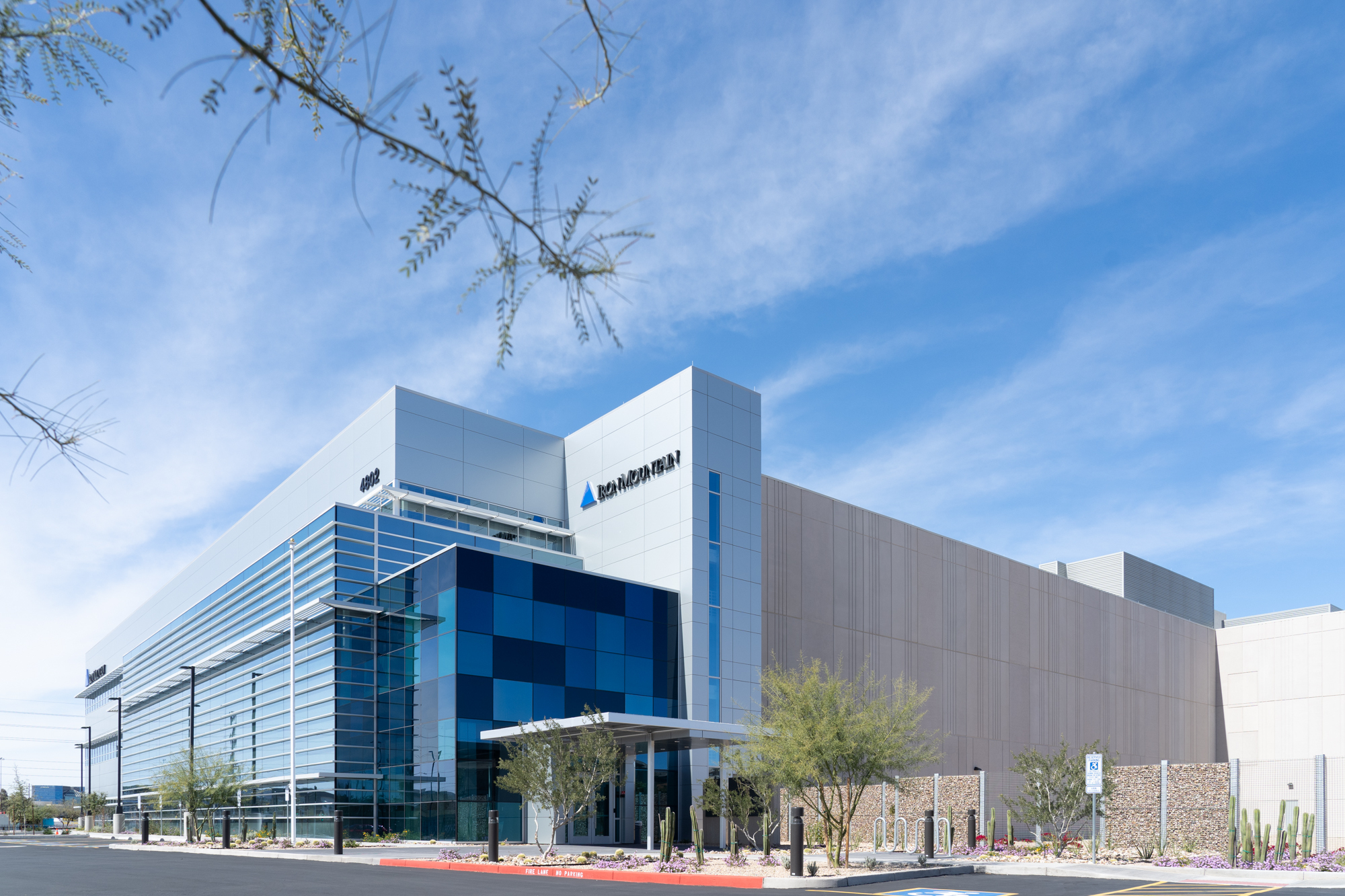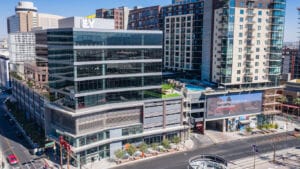Data centers in the Greater Phoenix area saw absorption rates up 38% compared with 2019, with supply struggling to keep up with demand. This surge is due in part to technology’s centrality in modern life that was exacerbated by COVID-19.
“With the growth of the internet, practically everything you do runs through a data center somewhere in the world. Every time you check your phone, that request is processed by a data center,” says Mark Krison, senior vice president at real estate services firm CBRE.
READ ALSO: Phoenix sees increase in leasing demand for data centers
While the pandemic may be waning, data center construction throughout the Valley is not, thanks to a favorable business environment, lack of natural disasters and the ubiquity of online services.
Ease of Access
Like many states, the Arizona legislature has crafted programs to incentivize companies to invest here, primarily in the form of tax relief. The Computer Data Center Program, administered by the Arizona Commerce Authority, encourages data center expansion in the state by providing a 20-year tax exemption at state, county and local levels on certain equipment purchases.
“It’s the biggest hook we have,” explains Mark Bauer, senior managing director of the JLL Data Center Solutions Group. “A company refreshes its servers every three to five years. Let’s say an average rack of servers costs $1 million, and the company is going to refresh 20 racks. That $20 million investment isn’t subject to an 8.6% sales tax.”
The Valley also has something that can’t be legislated: affordable land.
“In the last 36 months, data center developers have taken advantage of the availability of reasonably priced land in the region to expand their operations. All these co-locating companies, such as Compass Datacenters, Stream Data Centers and Vantage Data Centers, have decided to buy land parcels and build. That is a result of customers saying they’re satisfied with their decision to come to Greater Phoenix,” Krison notes.
Since a data center can provide services
to states beyond the one in which it located, it makes sense to choose a site where land is more affordable.
“Many companies from California and the Pacific Northwest have found it easier to grow here in Phoenix. The total cost to acquire land, build facilities and actually do business is anywhere from 30% to 50% less [than other Western states], on average,” Bauer says.
Beyond comparatively cheap land prices, the process to acquire zoning permits is quicker than in other markets. This means data centers can go from concept to completion quickly, an important factor for meeting demand.
“Phoenix has very little risk in terms of your ability to get zoning permits, provide power to the property and actually have a facility up and running. There are several examples of large projects here in the Valley, such as Compass and Stream, that were built in 12 to 18 months. You can flat out double that time frame in certain parts of the country,” Bauer says.
Mission Critical Conducive
In February, Texas experienced extreme weather that caused rolling blackouts throughout the state. Not only did the storms cause human suffering, but they also disrupted business operations that cost millions in lost productivity. For data centers, reliable power is crucial to keep mission critical operations functioning.
“Some of these data centers are running emergency communication, hospital and banking systems. Those are all mission critical operations that you don’t want to go down in any scenario,” says Brad Smidt, senior vice president of business development at the Greater Phoenix Economic Council.
The Valley has a long track record of favorable climate conditions. The lack of hurricanes, snowstorms and earthquakes reduces the possibility of situations where power might go down. The upfront cost of construction rises when facilities must build in protections against adverse weather.
Arizona’s dry air and cool winters also are an asset for data centers. The racks of servers housed in these facilities generate heat that can damage the equipment if not properly managed. Technology has improved so servers don’t require frigid environments, but cooling systems are still necessary to prevent malfunctions.
“When I started building data centers, the operators said the colder, the better. Over the years, the temperature tolerance of the servers has improved. Greater Phoenix’s cool, dry winters allows operators to utilize free cooling, which saves on operational costs and lowers the environmental impact,” says Kevin Connor, vice president and project executive at construction and development firm Skanska. Bauer adds, “Phoenix has hot summers, but these are well-insulated buildings. We’re more focused on pushing heat out of the building and maintaining a steady temperature.”
The energy mix and low outage rates
in the Valley also makes the area attractive for mission critical operations.
“Our primary power providers are SRP and APS. If you look at their generation mix, it’s a combination of natural gas, nuclear, coal and renewables. It’s a more diversified portfolio than you have in places such as Texas, where they’re more dependent on natural gas,” Smidt notes.
The Post-Pandemic Picture
For many, the COVID-19 pandemic has meant living life through a computer. Schools closed and shifted online, workers set up home offices, and entertainment options narrowed to what’s available on a screen.
“This pandemic accelerated everyone’s need to work remotely and utilize technology for services that they typically would’ve driven to the store for. I look at my kids as an example. They’re ordering six packs of cola, and Amazon delivers it in a couple hours. That is a shift in one’s way of living,” Bauer explains.
This increased reliance on technology for work and play was already in motion before the pandemic accelerated it. Advances such as 5G will only escalate users’ ability to access more data, which will require additional centers to meet demand. The result will be an even greater investment in the Valley of the Sun.
“The data center sector outperformed every other property sector in 2020. This did not go unnoticed by institutional capital,” says Carl Beardsley, director of capital markets at JLL. “From both an investor and lender standpoint, there’s been a big shift in willingness to lend toward the data center space as it’s become a darling of the real estate property sector.”




